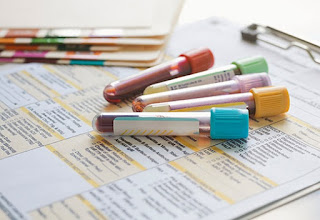Calculating Your Cholesterol
https://oxidizedcholesterol365.blogspot.com/2019/10/calculating-your-cholesterol.html
 Your cholesterol numbers help inform you of your risk of heart disease, but the standard way they’re determined doesn’t always provide the most accurate assessment. Johns Hopkins researchers have developed a better way to calculate more precisely the level of so-called bad cholesterol, known as low-density lipoprotein (LDL) cholesterol.
Your cholesterol numbers help inform you of your risk of heart disease, but the standard way they’re determined doesn’t always provide the most accurate assessment. Johns Hopkins researchers have developed a better way to calculate more precisely the level of so-called bad cholesterol, known as low-density lipoprotein (LDL) cholesterol.“The traditional way of measuring LDL cholesterol too often underestimates it,” says Johns Hopkins cardiologist Steven Jones, M.D. This means that some high-risk patients need more aggressive treatment than they may be receiving.
Understanding Cholesterol Basics
Cholesterol is a waxy substance that builds up in artery walls and contributes to the formation of plaque, the deposits that harden and narrow the arteries. This makes it difficult for blood to be pumped effectively from the heart to the rest of the body, setting the stage for a possible future heart attack or stroke.Cholesterol doesn’t float freely in the blood—it must be carried by lipoproteins, particles formed in the liver that are made of fat and protein. There are several types, including high-density lipoprotein (HDL), which helps remove cholesterol from the arteries and prevent fatty buildup, and various non-HDL lipoproteins, which in excess are linked to artery damage, heart disease and stroke. These include intermediate-density lipoprotein (IDL), LDL and very-low-density lipoprotein (VLDL).
Measuring Cholesterol
A simple blood test called a lipoprotein panel, or lipid panel, is used to measure these lipoproteins. Results show three easily measured scores: total cholesterol, HDL cholesterol and triglycerides, another type of fat molecule. Also included is LDL cholesterol, which is normally estimated rather than directly measured. To calculate LDL, labs use a formula known as the Friedewald equation, a more expedient way to assess LDL compared with actually measuring it, (which involves a cumbersome and expensive process called ultracentrifugation).A More Accurate Measurement Tool
The traditional Friedewald equation estimates LDL cholesterol this way: total cholesterol minus HDL cholesterol minus triglycerides divided by five. For simplicity’s sake, the formula applies a one-size-fits-all factor of five to everyone. But Johns Hopkins researchers found that this often makes LDL cholesterol appear lower than it really is for some high-risk patients. The researchers sought a more accurate formula that would take into account specific details about a person’s cholesterol and triglyceride levels.Using a database of blood lipid samples from more than 1.3 million Americans—almost 3,000 times larger than the one used to develop the Friedewald equation—Johns Hopkins researchers developed a more accurate system for calculating LDL cholesterol. Because it’s individualized and looks at all non-HDL cholesterol—not just LDL—it can be used to make more precise decisions about treatment to prevent heart attack and stroke.
“LDL cholesterol alone is a relatively poor predictor of your risk,” Jones says. The new formula is especially useful in guiding treatment decisions for patients with high triglycerides—above 200 milligrams per deciliter—or low HDL cholesterol, those who are being treated for high-risk conditions like stroke and heart attack, or those who are trying to reach certain targets of non-HDL cholesterol.
This newer LDL cholesterol formula is being adopted by U.S. laboratories as well as others around the world. The formula is also available as a mobile device app called the LDL Cholesterol Calculator. It is available on the iTunes App Store and on Google Play, which makes it easier for physicians to implement the calculation for patients.
Researchers hope the new formula will one day be adopted by all labs that process lipid panels, as it involves using the same test currently used at the same cost.
Learn more: